Good news!
PhD student Danielle Kettleborough and her supervisor Dr Hannah Merdian have had a paper published in the Journal of Sexual Aggression. The paper is entitled “Gateway to offending behaviour: permission-giving thoughts of online users of child sexual exploitation material” and involved thematically analysing the views of 16 forensic professionals regarding their views on the thinking patterns of child sexual exploitation material (CSEM) users. Four overarching themes were identified. (1) Perceived Nature of Children (perception of children portrayed in CSEM, as well as children in general), (2) Non-sexual Engagement with CSEM (motivating factors that are not inherently sexual in nature), (3) Denial of Harm (perception of the level of harm caused by CSEM), and (4) Expression of a General Sexual Preference (general interest in deviant sexual behaviour). Danielle and Hannah discuss the important implication that this study offers, including theoretical insight (e.g., differences between CSEM subtypes) and practical utility (e.g., moving towards developing a scale). The article can be found here
Hannah Merdian has also had another paper published (in Psychology, Crime, & Law) along with two of her ex-MSc students (Rebecca Crookes & Charlotte Hassett). The paper is entitled ” ‘So what about the stories?’ An exploratory study of the definition, use, and function of Narrative Child Sexual Exploitation Material”. It reports a study on a topic that has received very little attention in the field; namely, CSEM that is narrative-based (i.e., non-visual) or N-CSEM. In an attempt to define and conceptualise N-CSEM, the authors interviewed 11 professionals who had worked with N-CSEM users. Using thematic analysis with the interview data, 3 overarching themes emerged with regards to N-CSEM: (1) conceptual and legal definitions; (2) considering harm of N-CSEM; and (3) function of N-CSEM. As the authors state, “the study provides insight into N-CSEM as a separate entity from visual CSEM, challenging and informing legal decision-making and assessment and treatment providers for users of CSEM”. The study also provides researches with a base from which to begin exploring N-CSEM more deeply. The article can found here
